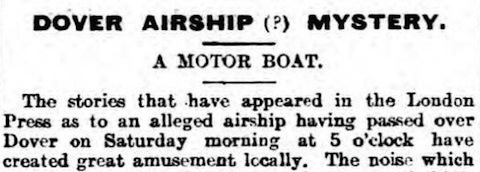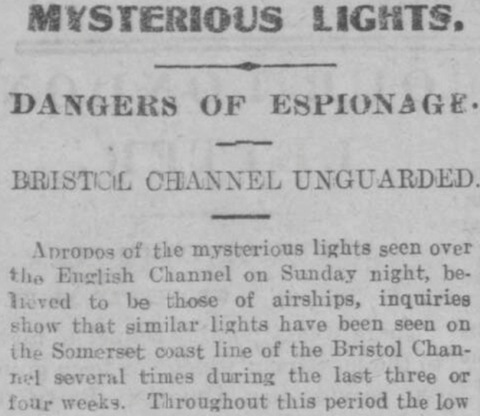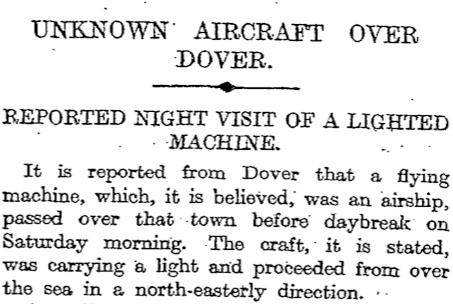Friday, 10 January 1913
A number of newspapers print articles of varying length about the Dover airship mystery today, including the Yeovil Western Gazette, the Exeter Western Times, and the Lichfield Mercury. None of these add any new information about this incident, one being a reprint of an article already published in another newspaper and the other two simply […]




